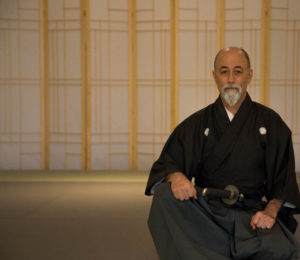
As a result, seitei iaido has become the most widely recognized form of iaido in Japan and the rest of the world. It continues to the present day, but has evolved into a. This practice was popularized in the Edo period (17th century) for testing the quality of Japanese swords. The kanji literally mean ' test cut ' ( kun'yomi: tameshi giri ). Although not all kendo dojo teach seitei iaido, the AJKF uses them as a standard for their exams and championships. Tameshigiri (,, , ) is the Japanese art of target test cutting.


The twelve seitei-gata are standardized for the tuition, promotion and propagation of iaido within the kendo federations. This style of standardized iaido is also known as Seitei Iai or Zen Ken Ren Iai. Zen Nippon Kendo Renmei Seitei Iai was developed by the All Japan Kendo Federation (AJKF, Zen Nippon Kendo Renmei or ZNKR). The name Muso Shinden Ryu most likely comes from the name given to the Shimomura branch by Hosokawa, Muso Shinden Eishin Ryu. Nakayama Hakudo studied under both Hosokawa Yoshimasa, a master of the Shimomura branch of Hasegawa Eishin Ryu, and Morimoto Tokumi, a fellow student of Oe Masamichi of the Tanimura branch. Look through examples of Iaid translation in sentences, listen to pronunciation and learn grammar. Some martial arts, notably kend, aikid, and iaid. Show algorithmically generated translations. Muso Shinden Ryu was founded by Nakayama Hakudo in 1932. Iaido HeiNER-the-Heidelberg-Named-Entity. ‘Muso Jikiden Eishin Ryu’ means ‘peerless, directly transmitted school of Eishin.’ ‘Eishin’ is an alternative pronunciation of ‘Hidenobu.’ Muso Shinden Ryu The school takes its name from its seventh headmaster, Hasegawa Chikaranosuke Hidenobu, who had founded Hasegawa Eishin Ryu. Often referred to simply as “Eishin Ryu,” it claims an unbroken lineage dating back from the sixteenth century to early 20th century. Muso Jikiden Eishin Ryu is one of the most widely practiced schools of iai in the world. It is possible, though, to move one step at a time toward the ultimate goal through practice.” “Even though you may devote yourself completely to it with all your heart and soul, it is very difficult to master Iaido completely. Training focuses on Kata, pre-arranged forms that are designed as defenses against an imaginary opponent, and each form teaches several principles of correct sword handling. The physical practice of Iaido includes drawing, parrying and cutting motions, as well as various methods of returning the sword to the scabbard. Every motion, such as the movements of the arms or legs and body, must be perfectly coordinated. A term used as a suffix as in iaido, judo, kendo, aikido and karate-do as a concept of the way. The practice of Iaido requires a calm spirit, extreme concentration and skill.

The do refers to the path or way taken by its practitioners. The ai refers to adaptability, the impromptu execution of movements whenever and wherever a appropriate response is necessary. The i in Iaido refers both to the existence of the body and that of the spirit. Iaido is a method of wielding the sword, one of the Japanese martial arts which has been practiced from ancient times until present day.


 0 kommentar(er)
0 kommentar(er)
